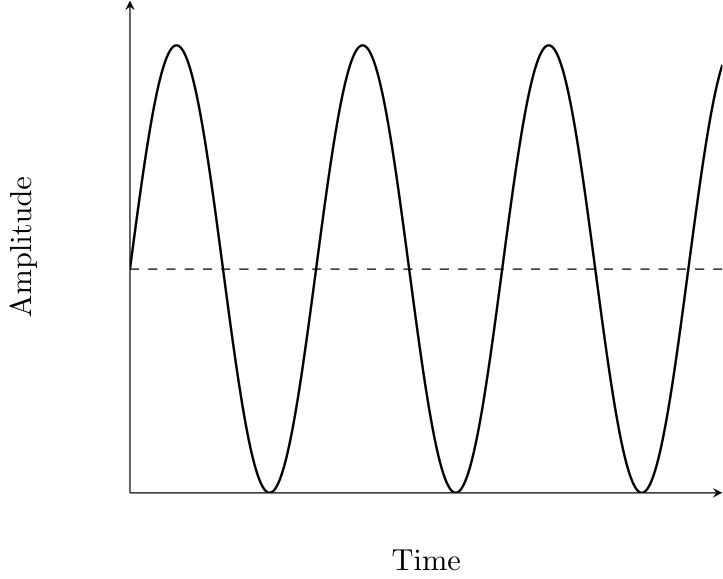Spring Pendulum
According to Hooke's law, a mass $m$, which is connected to a spring, experiences a restoring force. This force leads to the acceleration $a$ which can be written as the following differential equation: $$m\frac{\mathrm{d}^2x}{\mathrm{d}t^2} = -kx$$ where $k$ is the spring constant. The acceleration was here replaced with the second derivative of $x$ with respect to time. We already know from previous discussions that the sine (or cosine) functions to fulfill that condition. The easiest solution can therefore be written as $$\boxed{x(t) = x_0 \sin\omega t}$$ In this equation, $x_0$ can be interpreted as the amplitude and $\omega$ as the circular frequency. it can be determined by inserting this function into the differential equation which leads to $$x_0\omega^2 m\sin\omega t = -k\sin\omega t$$ Since $\sin\omega t$ cancels out on both sides, solving this equation for $\omega$ leads to $$\omega = \sqrt{\frac{k}{m}}$$ Using the correlation between the time and angular frequency $$\omega = \frac{2\pi}{T}$$ results in the following formula for the period: $$\boxed{T = 2\pi\sqrt{\frac{m}{k}}}$$ The following figure shows the function $x(t)$ for an arbitrarily chosen spring constant and mass.This page contains 231 words and 1453 characters.
Last modified: 2022-10-01 17:10:16 by mustafa



